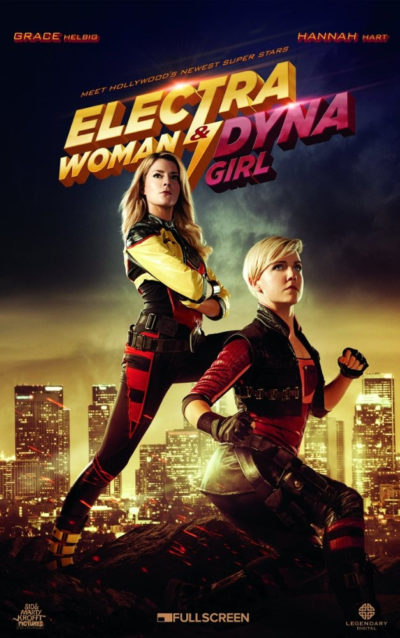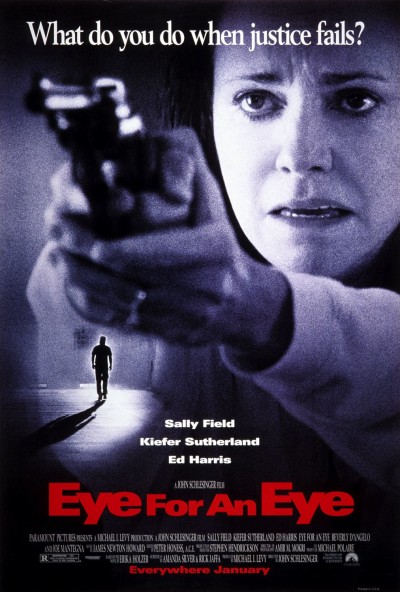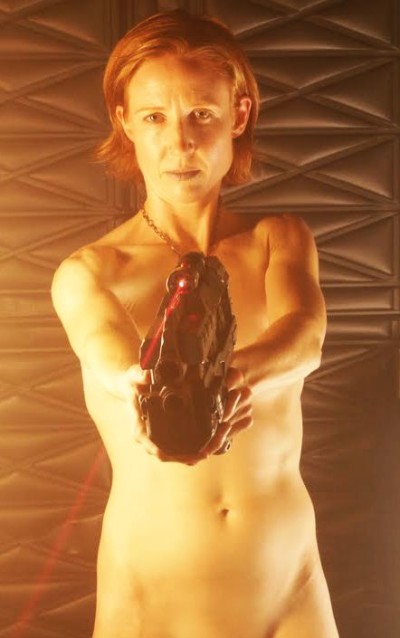★★★
“National insecurity”
 Riley Connors (Kane) is a CIA analyst, who quits her job and blows the whistle on secret government surveillance programs. Having pulled an Edward Snowden, she hides out in Colombia, helped by the reporter who broke her story. Her peace is short-lived: a knock on the door proves to be a local cop, working in conjunction with Bill Donovan (Weber), her former CIA colleague and lover. He comes with a proposition. Help them take down a pair of shady Cuban banking brothers (Espitia and Browner) who are suspected of funding domestic terrorism, and she’ll be able to return to the United States, with the slate wiped clean. It’s a very risky proposition, even if her reputation as an enemy of the state might be the perfect “in” to the targets’ organization. But can Bill be trusted either?
Riley Connors (Kane) is a CIA analyst, who quits her job and blows the whistle on secret government surveillance programs. Having pulled an Edward Snowden, she hides out in Colombia, helped by the reporter who broke her story. Her peace is short-lived: a knock on the door proves to be a local cop, working in conjunction with Bill Donovan (Weber), her former CIA colleague and lover. He comes with a proposition. Help them take down a pair of shady Cuban banking brothers (Espitia and Browner) who are suspected of funding domestic terrorism, and she’ll be able to return to the United States, with the slate wiped clean. It’s a very risky proposition, even if her reputation as an enemy of the state might be the perfect “in” to the targets’ organization. But can Bill be trusted either?
Probably wisely, it avoids too much in the way of potentially lethal (and largely irrelevant) political commentary. Though the main twist, to be honest, is so obvious, I have to wonder what kind of vetting the CIA does for its employees, and also about the overall accuracy of the term “intelligence community”. Yet, in something of a contradiction, once this clown-sized narrative shoe finally drops, it makes for a more straightforward and effective narrative the rest of the way. Everyone’s true motives have been exposed, rather than the murky world of spy vs. counterspy which the first half of the film has largely inhabited. That section feels a little like an episode from Alias with Sydney Bristow going undercover, climaxing in Riley trying to transfer all the brothers’ ill-gotten funds out of their accounts, before one of them arrives in their office.
As such, it does take a fair amount of disbelief suspension. Would any group of shady bankers employ an ex-spook as a security consultant – particularly one who was too morally high-minded for the CIA? Inevitably, one of the brothers falls for her, causing some friction between her and Bill, who still blames her for walking out on him, yet simultaneously still carries a flame for Riley. I think the latter half works better, showcasing some above-average location work, in and around Bogota, ending up on top of Mount Monserrate with its giant status of Christ [when I first saw this, I though we were in Rio!]. Oddly, this is the second film I’ve recently seen which was filmed there, for no particular reason, after The Belko Experiment.
Kane was also familiar to me, having played the ex-girlfriend of serial killer Paul Stagg in The Fall, though is rather different here, to the point I didn’t recognize her. It makes for solid, if unspectacular, entertainment which site a couple of F-bombs away from being a decent TV movie. While predictable, it’s well-enough constructed, and Riley makes for an interesting character, one whose scruples could end up being the (literal) death of her. There is a certain amount of bait and switch here, in that the Snowdon-esque escapade of the opening, ends up not being particularly relevant to the main plot: I can see how it could have been eliminated without much tweaking of the plot. However, what the film gains from this, likely balances out any losses, although it probably helps I had no fore-knowledge of the specifics. I see a sleeve with a girl and a gun, it goes on the list…
Dir: Conor Allyn
Star: Valene Kane, Charlie Weber, Mario Espitia, Andres Ogilvie Browne





 Released in 1980, it was only the previous year – as an opening caption tells us – that women were allowed into the Greek police force. So this obscurity [hence the low-quality images, for which I apologize!] was perhaps the first Hellenic entry in our genre. The heroine is Daisy Alexiou (Karlatou, best-known for playing Prince’s mother in Purple Rain), one of the first batch of policewomen, whom we first see in an introductory training montage. Initially assigned to traffic duty, her role in chasing and capturing a bank robber quickly gets her assigned to narcotics. Which is fine with her: she has a strong anti-drug streak, due to the personal impact it has had on her, proclaiming, “It is a disgusting disease, that kills people and rots their society.” Given this, I was wryly amused to see Daisy smokes like a chimney. Hey, it was the eighties…
Released in 1980, it was only the previous year – as an opening caption tells us – that women were allowed into the Greek police force. So this obscurity [hence the low-quality images, for which I apologize!] was perhaps the first Hellenic entry in our genre. The heroine is Daisy Alexiou (Karlatou, best-known for playing Prince’s mother in Purple Rain), one of the first batch of policewomen, whom we first see in an introductory training montage. Initially assigned to traffic duty, her role in chasing and capturing a bank robber quickly gets her assigned to narcotics. Which is fine with her: she has a strong anti-drug streak, due to the personal impact it has had on her, proclaiming, “It is a disgusting disease, that kills people and rots their society.” Given this, I was wryly amused to see Daisy smokes like a chimney. Hey, it was the eighties… Considering this is nearer four decades old than three, it has stood the test of time surprisingly well. Alexiou doesn’t mess around, happily hurtling into danger without a second thought, and proves generally competent, save for an ill-advised undercover operation, which ends badly and seems to exist largely so we can see Karlatou dressed as a hooker. Outside of the cigarette use (so rampant it feels like Marlboro were one of the producers), the most dated thing here is probably Daisy and Markos having a romantic relationship, in total violation of every boss-subordinate protocol. But both the story and characters still feel reasonably contemporary, and Karlatou carries herself effectively.
Considering this is nearer four decades old than three, it has stood the test of time surprisingly well. Alexiou doesn’t mess around, happily hurtling into danger without a second thought, and proves generally competent, save for an ill-advised undercover operation, which ends badly and seems to exist largely so we can see Karlatou dressed as a hooker. Outside of the cigarette use (so rampant it feels like Marlboro were one of the producers), the most dated thing here is probably Daisy and Markos having a romantic relationship, in total violation of every boss-subordinate protocol. But both the story and characters still feel reasonably contemporary, and Karlatou carries herself effectively.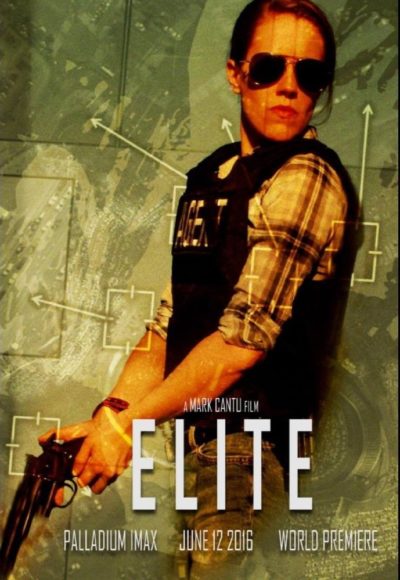 A mission in central America against drug cartel boss Reynaldo Benitez (Garza) goes wrong, leaving eight Special Ops soldiers dead. This includes the husband of Naval Covert Operations Command agent, Abbey Vaughn (Gregory), who is intent on discovering the truth about what happened to her spouse. She links up with the only survivor of the operation, Lt. Sam Harrigan (Scarbrough), now living in a trailer, and spending his time drinking and practicing golf. Together with the rest of their team, they investigate the case, only to find the tentacles of organized crime are deeper embedded than they appear, and their inquiries put not only themselves, but Abbey’s family in serious danger.
A mission in central America against drug cartel boss Reynaldo Benitez (Garza) goes wrong, leaving eight Special Ops soldiers dead. This includes the husband of Naval Covert Operations Command agent, Abbey Vaughn (Gregory), who is intent on discovering the truth about what happened to her spouse. She links up with the only survivor of the operation, Lt. Sam Harrigan (Scarbrough), now living in a trailer, and spending his time drinking and practicing golf. Together with the rest of their team, they investigate the case, only to find the tentacles of organized crime are deeper embedded than they appear, and their inquiries put not only themselves, but Abbey’s family in serious danger.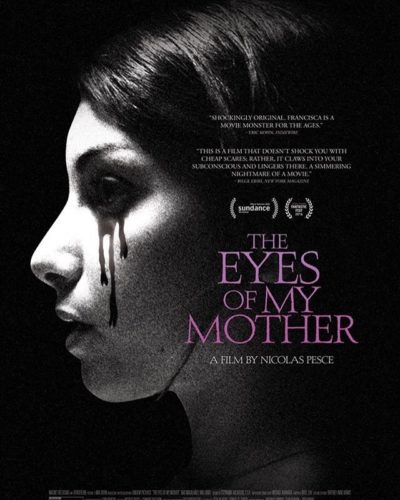 “Post-horror” is now, apparently, A Thing. It refers to horror films that subvert the traditional tropes and style of the genre in some way. Though based on the so-tagged example of it I’ve seen, the main subversion appears to be “not being frightening.” I think there’s a spot of pretension mixed in as well, since horror is generally regarded as marginally above pornography in terms of critical appreciation. By calling it something else, this gives those who turn their nose up at “horror” a chance to appreciate it. But it’s a bit of a double-edged sword for marketing, because you’re as likely to lose fans of “true” horror, who have been burned badly by films riding on the genre’s coat-tails.
“Post-horror” is now, apparently, A Thing. It refers to horror films that subvert the traditional tropes and style of the genre in some way. Though based on the so-tagged example of it I’ve seen, the main subversion appears to be “not being frightening.” I think there’s a spot of pretension mixed in as well, since horror is generally regarded as marginally above pornography in terms of critical appreciation. By calling it something else, this gives those who turn their nose up at “horror” a chance to appreciate it. But it’s a bit of a double-edged sword for marketing, because you’re as likely to lose fans of “true” horror, who have been burned badly by films riding on the genre’s coat-tails. You’re in deep in Devil’s Corner
You’re in deep in Devil’s Corner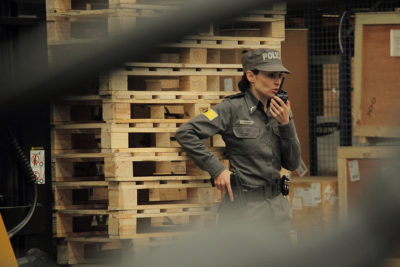 Phew. This cornucopia of plot-lines likely both the series’s biggest strength and its greatest weakness. There’s no doubt it’s actually very well-handled by the writers and cast: even the relatively minor characters are given an impressive amount of depth, and the script never gets jumbled or confused. This is a sharp contrast to Camelia la Texana, the show I’m currently watching: you don’t so much follow the plot, as desperately cling to it, as various groups of sideburn-wearing people scheme against each other. It’s also a contrast, in another way, to Viuda Negra, which was unashamedly about Griselda Blanco. In this case, the breadth of focus inevitably leads to a dilution of why we’re here, with poor Ana often sidelined.
Phew. This cornucopia of plot-lines likely both the series’s biggest strength and its greatest weakness. There’s no doubt it’s actually very well-handled by the writers and cast: even the relatively minor characters are given an impressive amount of depth, and the script never gets jumbled or confused. This is a sharp contrast to Camelia la Texana, the show I’m currently watching: you don’t so much follow the plot, as desperately cling to it, as various groups of sideburn-wearing people scheme against each other. It’s also a contrast, in another way, to Viuda Negra, which was unashamedly about Griselda Blanco. In this case, the breadth of focus inevitably leads to a dilution of why we’re here, with poor Ana often sidelined.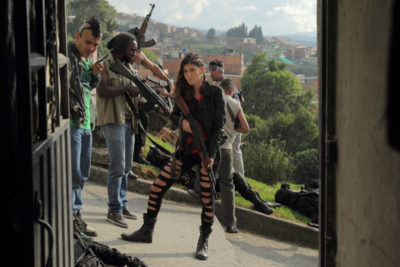 There are a lot of interesting supporting characters: not so much Eder and Yago, who are fairly cookie-cutter in terms of being opposing romantic heroes, with dark, troubled (and somewhat shared) pasts. It’s mostly on the fringes of Velasco’s gang that all the fun is to be found. Cachalote (Julián Caicedo) is a burly thug with a surprisingly soft heart – he has an unrequited crush on the mayor’s daughter, formed during her kidnapping. Meteoro (Erick Leonardo Cuellar) is the gang’s drug chemist, though he looks and acts like a methed-up version of Giorgio Tsoukalos, from the Ancient Aliens show. Most notable of all is Michelle (Estefania Piñeres, right), a hard-nosed barrio brat who is more than capable of holding her own in the tough environment, and is ferociously loyal to her boss. She would have enough stories to tell for her own, lengthy series, I’ve no doubt about that.
There are a lot of interesting supporting characters: not so much Eder and Yago, who are fairly cookie-cutter in terms of being opposing romantic heroes, with dark, troubled (and somewhat shared) pasts. It’s mostly on the fringes of Velasco’s gang that all the fun is to be found. Cachalote (Julián Caicedo) is a burly thug with a surprisingly soft heart – he has an unrequited crush on the mayor’s daughter, formed during her kidnapping. Meteoro (Erick Leonardo Cuellar) is the gang’s drug chemist, though he looks and acts like a methed-up version of Giorgio Tsoukalos, from the Ancient Aliens show. Most notable of all is Michelle (Estefania Piñeres, right), a hard-nosed barrio brat who is more than capable of holding her own in the tough environment, and is ferociously loyal to her boss. She would have enough stories to tell for her own, lengthy series, I’ve no doubt about that. Katie (Skovbye) and Sloane (Prout) are teenage BFF’s, who head off to spend time on an organic farm – though their real goal is the weekend shopping in New York which will follow it. On the way, they are distracted by a couple of bits of prime young, rural manhood. But before you can say “roll in the hay,” they are drugged, the pair waking up to find themselves chained to duplex shipping containers, from where they are rented out as sex slaves to anyone interested. Their sudden dropping off the grid concerns Katie’s uncle Jason (Richards), who happens to be an FBI agent. He heads to the area to investigate, unaware the local sheriff is in on the plot. However, there’s only so far you can push a person, before they break. When Katie and Sloane snap, and escape, rather than heading for safety, they decide to stick around, so they can get thoroughly medieval on those responsible.
Katie (Skovbye) and Sloane (Prout) are teenage BFF’s, who head off to spend time on an organic farm – though their real goal is the weekend shopping in New York which will follow it. On the way, they are distracted by a couple of bits of prime young, rural manhood. But before you can say “roll in the hay,” they are drugged, the pair waking up to find themselves chained to duplex shipping containers, from where they are rented out as sex slaves to anyone interested. Their sudden dropping off the grid concerns Katie’s uncle Jason (Richards), who happens to be an FBI agent. He heads to the area to investigate, unaware the local sheriff is in on the plot. However, there’s only so far you can push a person, before they break. When Katie and Sloane snap, and escape, rather than heading for safety, they decide to stick around, so they can get thoroughly medieval on those responsible.
 No matter how bad-ass you are, you’ll never attain “13-year-old Mongolian girl, standing astride a mountain, holding the trained golden eagle she raised from a chick, after climbing down a cliff to get it” levels of bad-ass. That’s what we have here, folks, in this documentary about Aisholpan. She’s a Mongolian teenager who wants to become an eagle huntress, a profession traditionally reserved for the male lineage. Her father Rys learned the skills necessary (and, presumably, inherited the really large, very well-padded glove) from his father, and so on.
No matter how bad-ass you are, you’ll never attain “13-year-old Mongolian girl, standing astride a mountain, holding the trained golden eagle she raised from a chick, after climbing down a cliff to get it” levels of bad-ass. That’s what we have here, folks, in this documentary about Aisholpan. She’s a Mongolian teenager who wants to become an eagle huntress, a profession traditionally reserved for the male lineage. Her father Rys learned the skills necessary (and, presumably, inherited the really large, very well-padded glove) from his father, and so on.